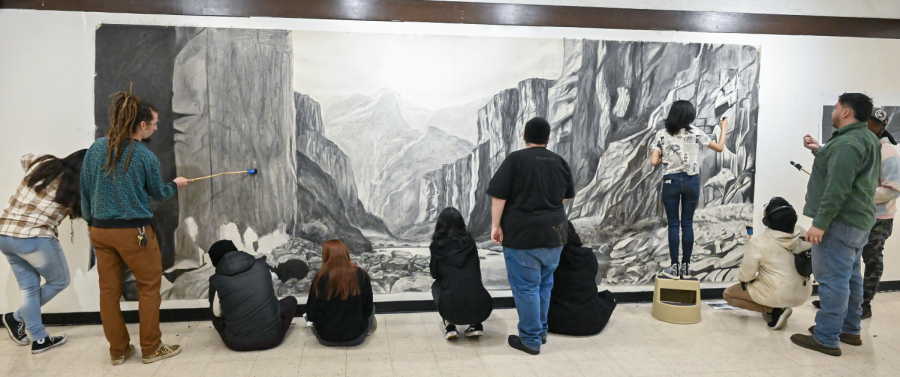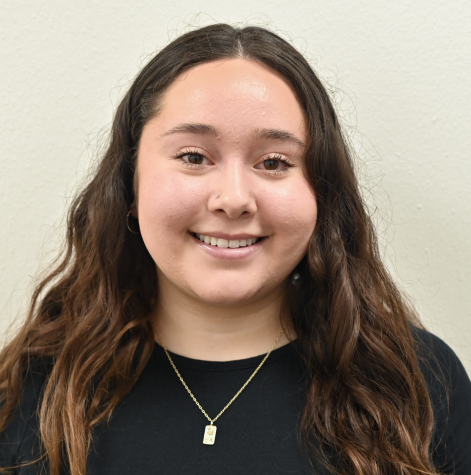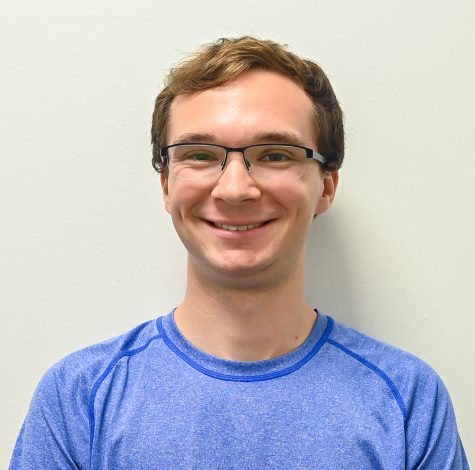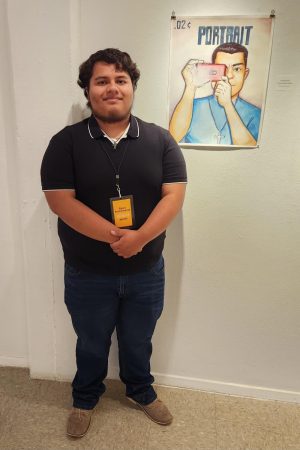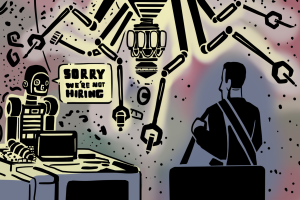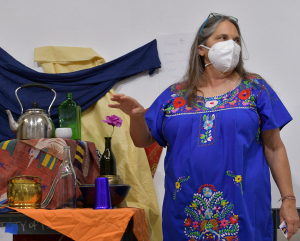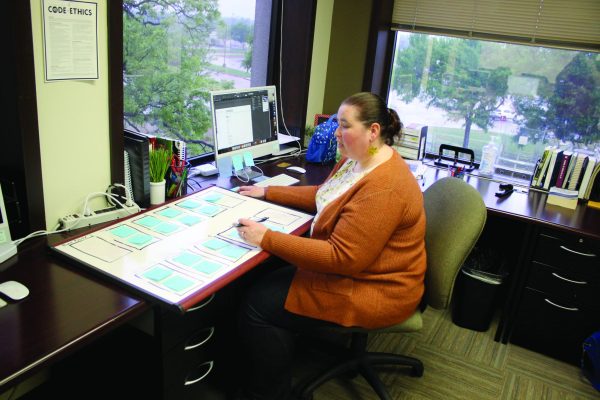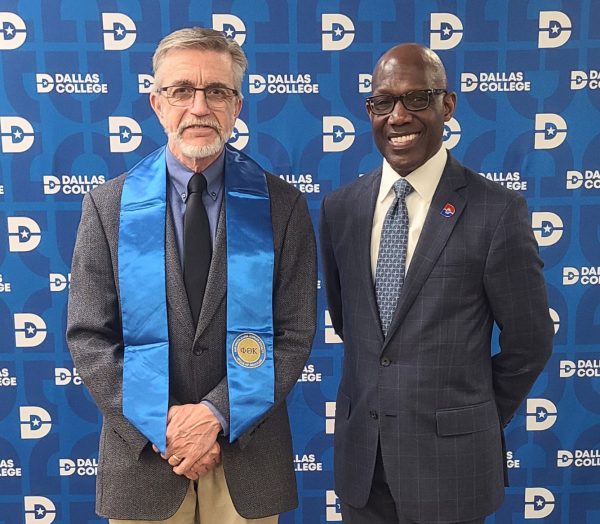Mural ignites collaboration, socialization among students
While some may think of art as an individual practice, Kathy Windrow sparks creativity and teamwork in her students with a large-scale mural, which serves as their end-of-the-semester project.
Windrow has taught art and art history at Eastfield for over 30 years, and she has been doing collaborative large-scale murals in her classes since the early 1990s. She took inspiration for the project from her previous work with wall-sized pieces.
“I love to work really large,” Windrow said. “I used to make gigantic, oversized paintings and drawings. I love the way it feels to make huge, 20-foot-long brushstrokes or marks. I just think it’s good for people to work on the large scale.”
When Windrow started the project, she was influenced by prehistoric cave paintings. She wanted to recreate the famous drawings inside the caves at Lascaux, France.
Since then, the themes of the murals her students work on have fluctuated. The past two semesters, Windrow took inspiration from Texas landscapes and was interested in doing the same again.
Windrow was inspired by the Texas-Mexico border and the issues surrounding it when she organized this semester’s mural.
The reference for the mural was a landscape that was generated using artificial intelligence by a Southern Methodist University professor, Ida Greenberg. Students recreated the AI landscape on an 8-foot-long and 20-foot-wide canvas, using charcoal from a forest fire in New Mexico.
Windrow dedicated the last two weeks of the semester in her drawing class to completing the mural. She does not help students paint the mural. Instead, she instructs them to work as a team to finish it.
Throughout the semester, students work primarily on individual projects, so the mural gives them an opportunity to socialize with other students and brings them out of their shells.
“I enjoy the whole process of seeing a bunch of people working on something that they can’t completely envision. They have to respond to each other and figure it out day by day,” Windrow said. “I love seeing a whole lot of people working on one thing, and I love that it’s the high point that ties together everything that we’ve done all semester.”
In previous semesters, Windrow allowed her students to work on whichever area of the mural they felt the most comfortable in. However, this semester was the first time there was a team captain who led the other students to complete the mural.
Armando Sanchez fell into this role on the first day of the project. He created a map that recorded where everybody was working to keep the class organized.
Sanchez also helped students identify what area of the mural would highlight their strengths and artistic abilities.
“It was good because it helped the people that were more timid and quiet jump right in,” he said. “I would just go up to them and be like, ‘Hey where do you want to start? I feel like your strengths are this by looking at your past art, and you’re really good at this.’”
Sanchez worked with students like Citlalli Ambriz to ensure they did not stress too much about the project.
“At first it was a little intimidating because it’s a really big piece of paper and no one really knows where to draw,” Ambriz said. “Luckily, [Sanchez] helped us get situated where we feel more comfortable on the spot.”
The project helps students get closer to one another and gives them one last chance to showcase the progress they have made throughout the semester.
“It’s helped a lot by bringing people out of their comfort zones and making new friends, which is really what it is all about – working as a team and having a good time laughing and talking about different things,” Sanchez said. “It just brightens up the mood more. I feel like if this was something we had done in the beginning of the semester, we probably all would have talked a lot more.”

